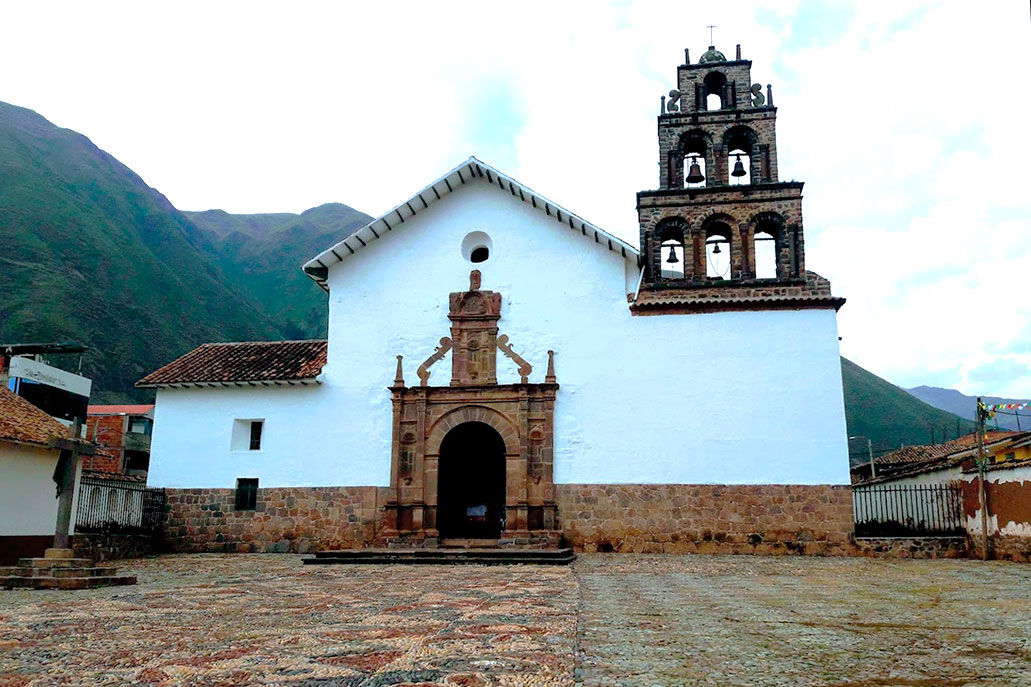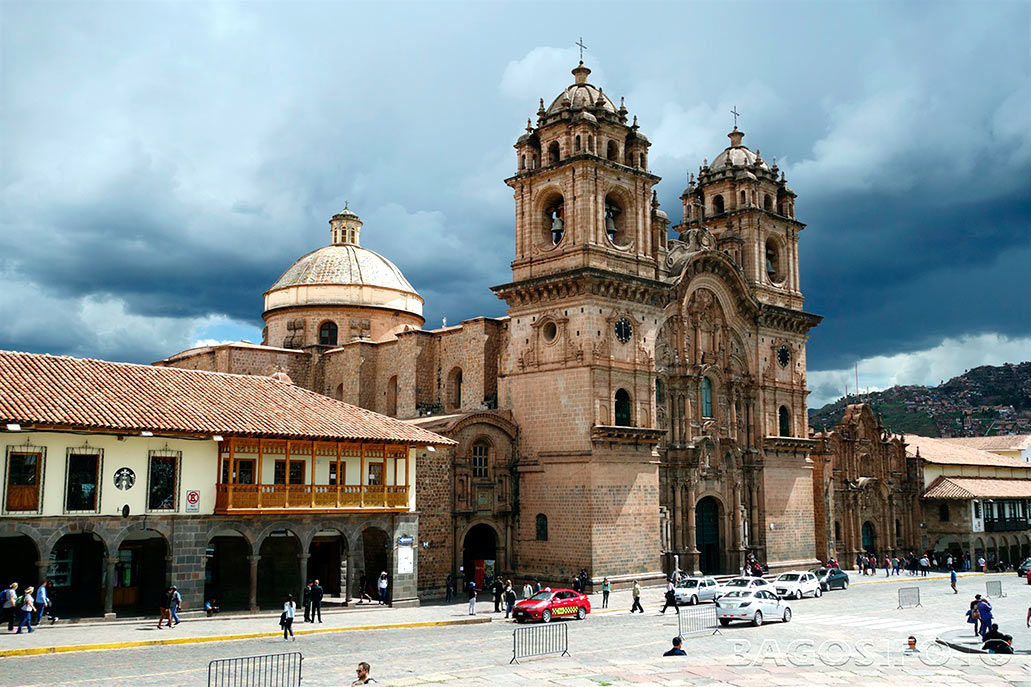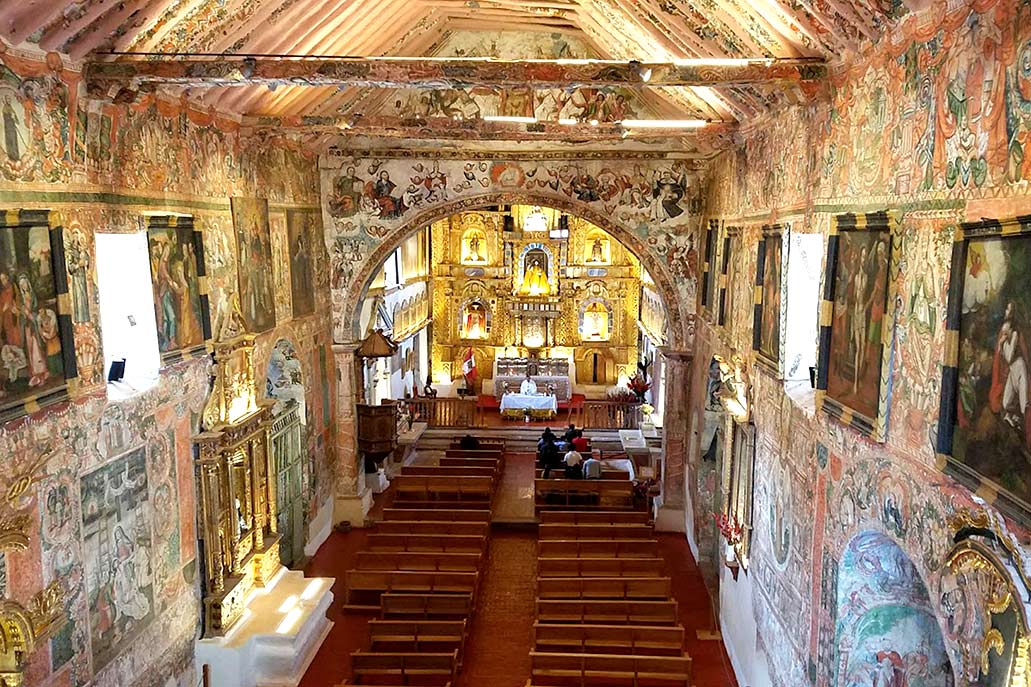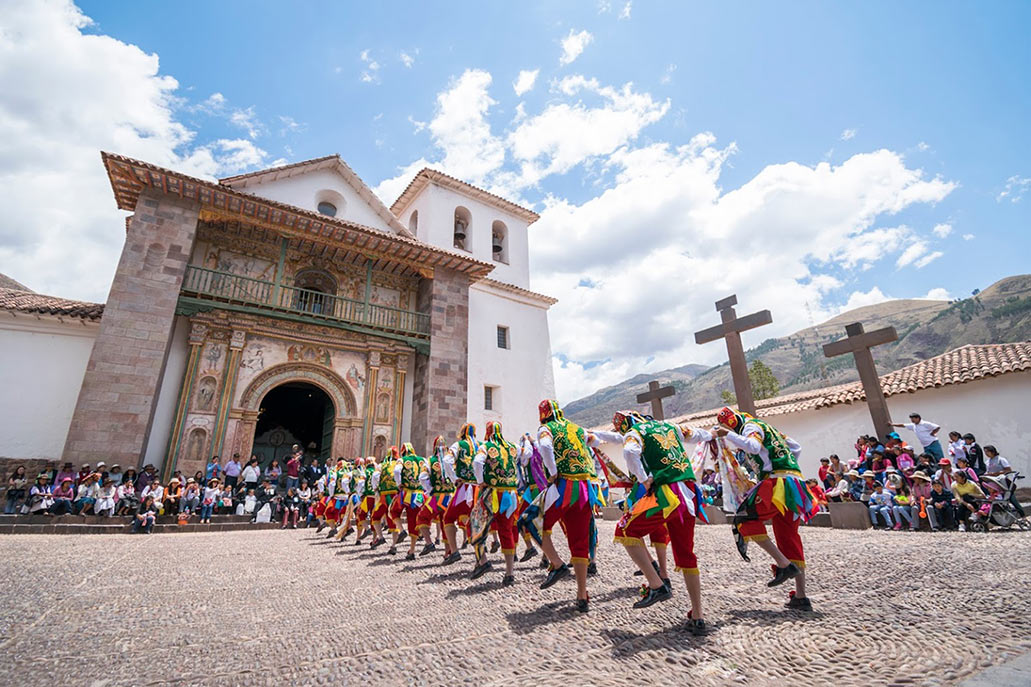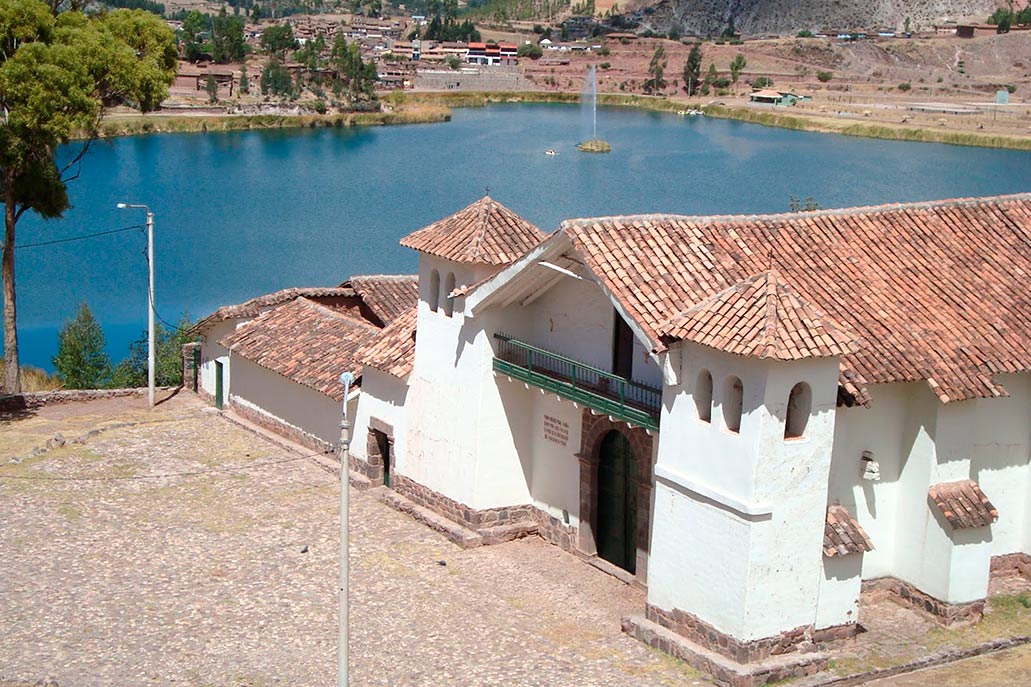Religious route in Cusco: 4 temples of Andean baroque expression
Cusco is home to a large number of temples. Mostly built in colonial times with the aim of evangelizing the indigenous population. During the viceroyalty different social and political processes were gestated. One of these was the relationship that art had with religion. From where a symbiosis between Christian and Andean elements known as the Andean Baroque was obtained. The expression of this movement can be seen in the temples built between the 16th and 17th centuries. Let’s see four temples with a strong presence of this artistic-religious movement. All of them are part of the Andean Baroque Route in Cusco, a circuit that also serves to manage humanitarian aid.
content
Like the European baroque, the baroque in Latin America leaned towards a religious tendency. It was an artistic movement in order to evangelize and return power to the church during the seventeenth century. In America it served as a formula to attract more followers as a symbol of evangelization and defense of the faith. Many art historians point out that the Andean baroque was used exclusively to exert an effect on men. Many of the paintings were used to show the evangelizing process or the life of some holy martyrs, in this way they fell captivated, moved and even confused.
Cuzco painting was influenced from Ecuador to Chile. Although it did not present a strong intellectual influence, it had the presence of iconic representations. These representations were easy to interpret. Something important is to highlight the social state of that time, where the opportunities for the indigenous were completely null. The admission of Indian or mestizo painters to art schools was possible thanks to the great demand that these works acquired. In addition, for the mestizos, it was a way of inserting themselves into society. The large number of indigenous and mestizo exponents made it possible to prefer artistic expressions with figures alluding to the Cusco territory and the Andean worldview.
Painters belonged to a guild that regulated artistic forms and expressions. All of them inclined to representations more related to Andalusian or European art. In the year 1688 this guild fractured, leaving two sides, one of Spanish painters and the other of Indians. This happened after a lawsuit over the construction of the triumphal arch for the Corpus Christi festival that year. After the separation and leaving behind the regulation and artistic norms of the colony, the Indian and mestizo painters obtained more freedom. In this way, they more explicitly shaped the elements of the Andean cosmovision and some local elements. This moment was seen as a first moment of identity with miscegenation and the elements of the place.
Let’s get to know some of the temples that house a large number of these artistic expressions. Most of these works are works on canvas, perhaps the most popular to see. However, this same style can be seen in decorations, doors, carvings, engravings, in the same architecture. This tour is undoubtedly a walk through the history of art.
1. Temple of the Compañia de Jesus – Cusco
The first destination is the Temple of the Compañía de Jesús. It is located in the Main Square of the city. It is one of the most beautiful constructions that can be found within Cusco. Its construction began in the year 1576 on an Inca temple, called Amaru Cancha. It went through a total reconstruction, after the earthquake of 1650, where it suffered great damage.
The base of its construction is in the shape of a Latin cross. It is built on the basis of pink basalt and andesite with beautiful carvings and sculptures on the facade. The façade has two towers and two adjoining chapels. The model of the temple was taken to other places as a reference for future construction.
Inside you can see one of the tallest altars, 21 meters and 12 meters wide. This altar is made of carved cedar wood and covered with gold leaf with various ornaments and decorations with precious stones typical of the Baroque style. The nave of the construction is in the form of a ribbed vault supported by large stone walls. The interior is illuminated by a half orange dome where you can see some very precise carvings that highlight the indigenous talent.
You can find paintings related to the life and work of San Ignacio de Loyola, a painting about the marriage of Martín García de Loyola with the ñusta Beatriz Clara Coya. Also paintings by Diego de la Puente, Marcos Zapata and Cristo de Burgos.
The opening hours of the Temple of the Compañia de Jesus are from 9:00 a.m. to 11:30 a.m. and from 1:00 p.m. to 5:30 p.m., from Monday to Sunday.
2. Temple of San Juan Bautista of Huaro
The San Juan Bautista de Huaro temple was built between the 16th and 17th centuries. It is a Renaissance-style construction based on stone and adobe. It is located 43 kilometers from the city of Cusco. The spectacular thing about this church is that it maintains paintings and sculptures of different value, also in the temple, there is a mural in which no iconography is repeated.
As for the altar, it has a Renaissance style made of wood by Martín de Torres, it is covered with gold leaf and several embossed silver inlays. The entire interior of the temple has murals or details that embellish every corner and wall of the temple. The most impressive painting is the one left by the Cusco artist Tadeo Escalante, where you can see the journey through death, that is, it presents the final judgment, hell and glory. All are united by Andean and colonial symbology. You can also see details of popular beliefs and some evangelization programs that were used at that time.
The opening hours of the San Juan Bautista de Huaro temple are from Monday to Sunday from 10:00 a.m. to 4:00 p.m..
3. Temple of San Pedro Apostle of Andahuaylillas
The temple of San Pedro Apóstol de Andahuaylillas, is also known as the “Sistine Chapel of America”. Although the facade is not as spectacular, the comparison is made by the interior of this temple. Upon entering this room you can see different carvings, paintings with a gold-plated frame. In fact, it seems that the entire interior is bathed in gold.
Its construction began in 1610, on the initiative of Juan Pérez de Bocanegra. Located in the district of Andahuaylillas, that is 44 kilometers from Cusco. It belongs to the province of Quispicanchi. Andahuaylillas apparently was an important Inca center. The temple was built on the foundations of an Inca temple.
The interior of the temple is overwhelmingly ornate. It can be explained with this, the evangelizing purpose that these temples had. The ceiling is decorated with motifs referring to fruits and flowers typical of the place. All of this has a great composition thanks to the paintings and canvases that also have frames bathed in gold leaf. Most of the canvases are attributed to the artist Luis de Riaño.
This temple was used for the evangelization of all the natives of the place. In the baptistery, one can find an inscription that calls attention to the accompanying translations. The note says: “I baptize you in the name of the Father and the Son and the Holy Spirit Amen” with translations in Quechua, Aymara and Puquina. The Archdiocese of Cusco worked as a translation center for the indigenous languages together with the parish priest Bocanegra.
The opening hours of the San Pedro Apóstol de Andahuaylillas Temple are from 7:30 a.m. to 5:00 p.m., Monday through Sunday.
4. Chapel of the Virgen Purificada of Canincunca
This construction is located in the district of Huaro in the province of Quispicanchi, approximately 50 kilometers from Cusco. In the direction Cusco – Sicuani or Cusco – Arequipa. Although it has a simple construction, it houses a beauty of Andean baroque art in its four walls.
Like the temple in Andahuaylillas, it has a construction based on stone and adobe. However, upon entering the enclosure, the environment is transformed by the details and paintings that decorate it. It is said that it was built on top of an important temple of the Wari culture.
Something particular about this temple is that in its decorations it presents representations of Andean textiles, which are known as pallais, as well as images of flowers, fruits, birds, feathers, and Andean symbols.
Canincunca refers to the place where the chapel is located. Etymologically it comes from two Quechua words “canin” and (cunca) which would be “bitten neck” or “trimmed neck” alluding to the cut that the hill has. From this height you can see a lagoon, thus having a spectacular view of the southern valley.
The opening hours of the Chapel of the Virgen Purificada of Canincunca are from Monday to Sunday from 10:00 a.m. to 4:00 p.m..
5. Prices
Temple | General E. | E. Student | E. National |
|---|---|---|---|
| Compañía de Jesús (only) | PEN 10 | PEN 5 | PEN 5 |
| Andean Baroque Route (3 templos) | PEN 15 | PEN 10 | PEN 10 |
| Andean Baroque Route (4 templos)* | PEN 25 | PEN 15 | PEN 15 |
6. Schedules
Temple | Schedules |
|---|---|
| Compañia de Jesus of Cusco | Monday to Sunday: 9:00 a.m. to 11:30 a.m. and 1:00 p.m. to 5:00 p.m. |
| Virgen Purificada of Canincunca | Monday to Sunday: 10:00 a.m. to 4:00 p.m. |
| San Juan Bautista of Huaro | Monday to Sunday: 10:00 a.m. to 4:00 p.m. |
| San Pedro Apóstol of Andahuaylillas | Monday to Sunday: 7:30 a.m. to 5:00 p.m. |
By Imachupicchu – Last updated, August 22, 2024
